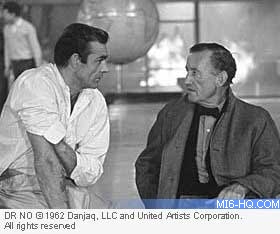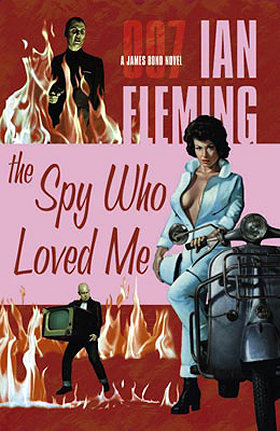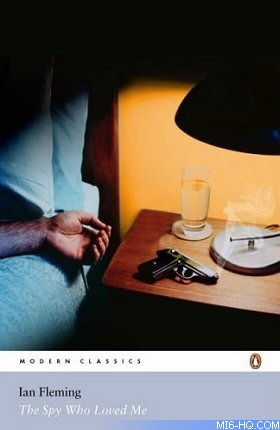 |
| |
MI6 looks back to the year of 1962, and the press
reaction to Ian Fleming’s surprising James
Bond novel "The
Spy Who Loved Me"...
|
|
Time Tunnel: Fleming Turns The Tables
5th March 2007
The year is 1962 and Bond is due to make his
first big screen appearance in the form of Sean Connery. Ian
Fleming has penned eight 007 adventures and a collection of short stories,
all of which met praise from readers and critics
alike.
Bond
is about
to become
a household name but simply months out from the release of “Dr.
No”, Fleming makes a bold move and shocks avid followers
with a change of perspective – the perspective of a
woman.
| “The
Spy Who Loved Me” hit the shelves on the 11th
of April 1962, and in the same month Time Magazine published
an exploration
of Fleming's tenth Bond outing, and with it, the
legacy of the character.
When Fleming juggles his much loved Bond formula, Time
reported that fans will “look in vain for the familiar
early scene in the eighth-floor office on Regent's Park
where the taciturn M re-lights his pipe and hands Bond
his latest assignation with Death and the Maiden.”
“And that is not all they will miss; unaccountably
lacking in The Spy Who Loved Me are the High-Stake Gambling
Scene, the Meal-Ordering Scene, the Torture Scene, the battleship-grey
Bentley, and Blades Club.”
Does this signify that
007 is built entirely on the much loved formula? For most
fans, it is the scenes and traditions some may describe
as cliché that clinch favourite Bond novels: “Author
Fleming calls this "the bang-bang kisskiss formula."
But it takes more than this to account for the undisputed
eminence of James Bond as the best-known wearer of a shoulder
holster in print.”
|
|
 Above:
1st edition Jonathan Cape hardback (UK) Above:
1st edition Jonathan Cape hardback (UK) |
 |
|
But by watching his hero
from another character's viewpoint, Fleming is able to
explore him in ways previously impossible.
The Time reviewer observes: “One explanation is
Bond's universal expertise. His man-of-thee-worldsmanship
is so explicit that his fans' fantasies have a rich and
varied diet to feed on. His cigarettes, with their three
distinctive gold rings (a considerable security risk),
are blended for him of a Balkan tobacco mixture by Morlands
of Grosvenor Street.”
Left: Fleming chats to Bond actor
Sean Connery on the set of "Dr. No" in 1962
|
And what of Fleming’s angle? At the time
of the reviews Fleming remained vacant about his new creation,
explicit only
on the fact that Vivienne Michel was a one deal wonder: “Fleming
made clear that the girl-narrated technique of Spy established
no trend, nor was Vivienne Michel likely to unzip her way into
any more of the saga. He was careful to send a complimentary
copy
to his famous fan in the White House. Copies will also circulate
in another place where he has friends — the British secret
service. ‘They tell me,’ says Fleming happily,
that my books are remarkably good recruiting manuals.’”
 |
 |
|
Above: Modern cover art for "The Spy Who Loved Me".
|
All in all, the spring of ’62 proved only
to be a short lull for fans of 007 – for a few months
later, James Bond 007 burst onto the silver-screen in “Dr.
No”.
Fleming went on to write three more full length novels, all of
which met with fans and reviewers approval. “The Spy
Who Loved Me”
was by no means the low point of the literary Bond, and to some
fans, an interesting moment very well worth highlighting.
Related Articles
 The Spy Who Loved
Me - Novel Coverage
The Spy Who Loved
Me - Novel Coverage